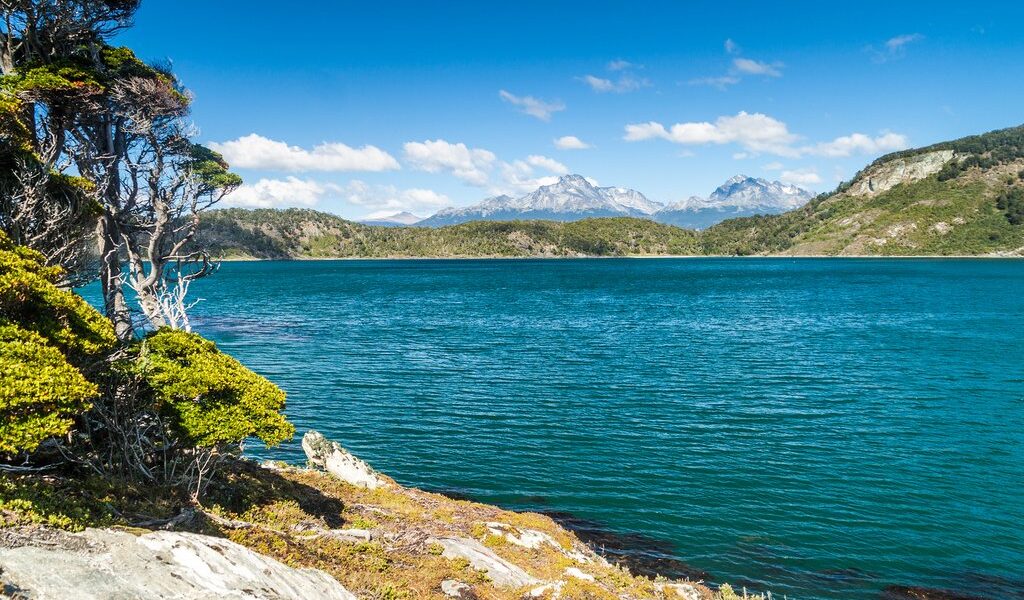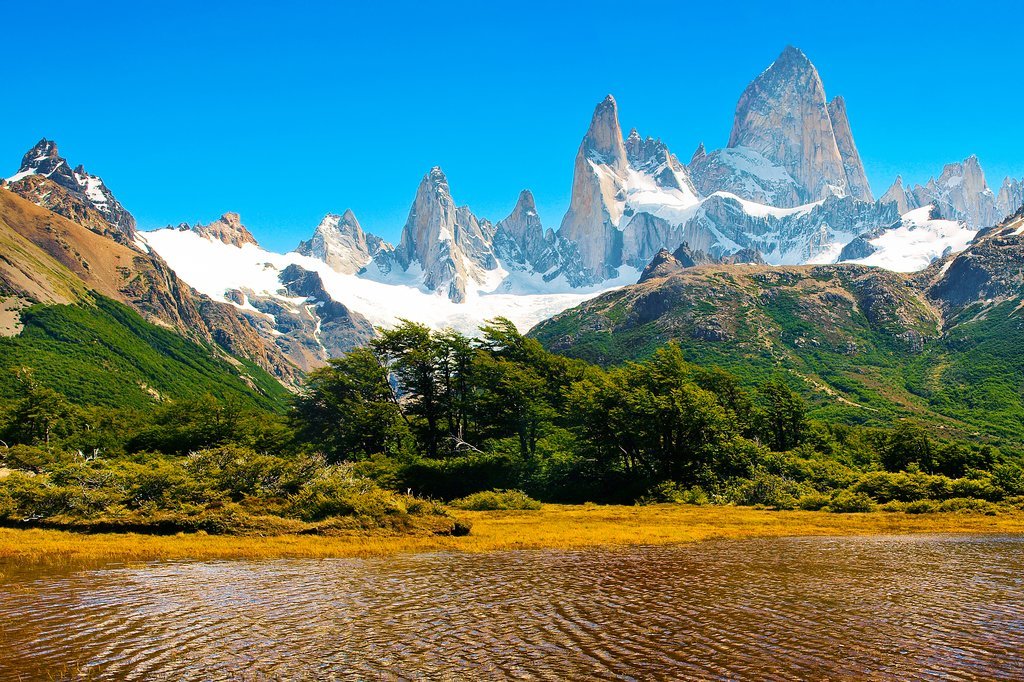
In Patagonia, as the old saying goes, you can experience four seasons in a single day. It’s true that you should pack for sun, cold, rain, and snow—but in reality, the seasons here differ greatly with respect to crowds, prices, and wildlife. Read on for more about whale watching in the spring months, winter skiing, fall foliage photography, and summertime treks in some of the world’s best national parks.
## Seasonal Planning for Patagonia Travel: A Comprehensive Guide
Planning a trip to the breathtaking landscapes of Patagonia requires careful consideration of the seasons. Remember that Argentina and Chile, the two countries sharing this magnificent region, reside in the southern hemisphere. This means their seasons are reversed compared to the northern hemisphere. Therefore, December through February mark the height of summer, also considered peak travel time, while July plunges the region into the depths of winter. Generally, the summer months offer the most favorable weather conditions for exploring Patagonia. However, the shoulder seasons of fall and spring often provide a sweet spot, balancing pleasant weather with potentially lower prices and fewer crowds.
Venturing to Patagonia in winter can be a unique and rewarding adventure for those prepared for the challenges. Pack accordingly with warm layers, and be prepared to adjust your itinerary due to potential stormy weather conditions. In Patagonia, regardless of the season, expect a diverse range of weather phenomena. You might experience cold nights, brilliantly sunny days, sudden rain showers, and even unexpected snowfall – all within a single trip. Embrace the unpredictability and be ready for anything!
| Season | Pros | Cons | Best for | Where to Visit |
| Mid-November to March (Summer) | Summer offers the most reliable and generally pleasant hiking conditions. The days are long and sunny, ideal for outdoor adventures. Glaciers and national parks are easily accessible, with trails and facilities fully operational. This makes exploring the iconic landscapes of Patagonia relatively straightforward. | Summer is peak travel season, resulting in higher prices for accommodations, tours, and transportation. Advanced reservations are essential for securing hotels, campsites, and activities, often months in advance. The increased number of travelers can also lead to crowded trails and popular attractions. | Summer is the perfect time for glacier trekking, offering the chance to explore these icy giants up close. Hiking enthusiasts will find a plethora of trails suitable for all skill levels. It’s also the ideal season for visiting southernmost Patagonia, where the weather is more forgiving than in other months. | Consider visiting Torres del Paine National Park for its iconic granite peaks and challenging hikes. Explore Tierra del Fuego, the “Land of Fire,” with its unique landscapes and wildlife. Don’t miss Parque Nacional Los Glaciares, home to the majestic Perito Moreno Glacier and other stunning ice formations. |
| April and May (Fall) | Fall transforms Patagonia into a photographer’s dream, with vibrant fall foliage painting the landscapes in shades of red, orange, and gold. Fewer crowds translate to a more peaceful and intimate experience. Possible discounts on accommodations and tours can make your trip more affordable. | Some businesses, particularly smaller establishments and seasonal tour operators, may close for the season after the summer rush. Whale-watching opportunities are not available off Argentina’s coast during this time. This is something to consider when planning your itinerary. | Fall is ideal for photography, offering stunning landscapes and opportunities to capture the changing colors. Wildlife viewing can also be rewarding, as animals are often more visible with fewer people around. It is a great season to see guanacos roaming freely. | Explore El Chaltén, the trekking capital of Argentina, and enjoy hikes with breathtaking views of Mount Fitz Roy. Visit El Calafate, the gateway to Parque Nacional Los Glaciares, and witness the awe-inspiring Perito Moreno Glacier. |
| June to August (Winter) | Winter transforms Patagonia into a snow-covered wonderland, offering a unique and magical experience. The landscape becomes incredibly picturesque. The region experiences a significant decrease in the number of visitors, making it a peaceful and solitary experience. | The extreme cold makes it challenging, and sometimes impossible, to visit the southernmost destinations. This is because some regions close down entirely. Winter weather can significantly affect travel plans, with road closures and flight delays common. | Winter is the perfect time for skiing and snowboarding, with several excellent ski resorts in the region. The solitude and tranquility of the winter landscape offer a unique and rewarding experience for those seeking peace and quiet. | Explore the lakes regions on either side of the Argentina-Chile border, where you can find charming towns and stunning scenery. Visit Península Valdés for the chance to see southern right whales in their breeding grounds. |
| September and October (Spring) | Spring offers a blend of pleasant weather, fewer crowds, and opportunities for wildlife viewing. Discounted hotel rooms can make your trip more affordable. The landscapes are starting to come to life after the winter months. | Some attractions may still be closed for the winter season, limiting your options in certain areas. The weather can still be unpredictable, so packing layers is essential. | Spring is an excellent time for hiking, with wildflowers blooming and the landscape awakening. Whale-watching season begins in Argentina, offering the chance to see these majestic creatures up close. Wildlife viewing is generally good during this time of year. | Visit Península Valdés for whale-watching and other wildlife encounters. Explore Parque Nacional Los Glaciares and enjoy the stunning scenery with fewer crowds than in summer. |
Mid-November to mid-March (Summer): Peak Travel Season – A Deep Dive
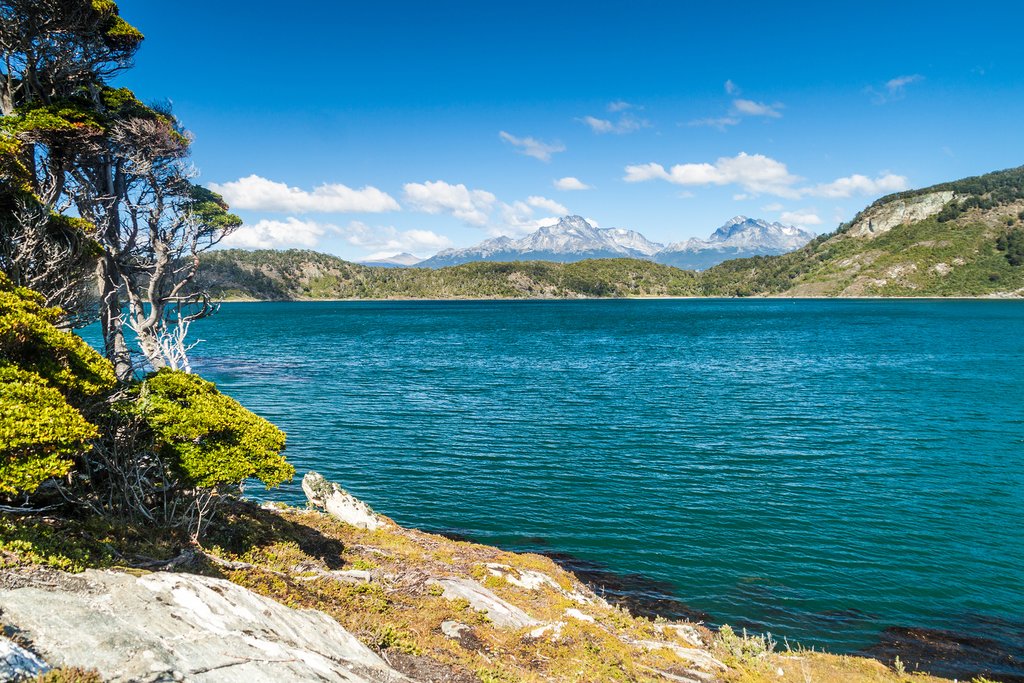
Summer in Patagonia, encompassing both the Chilean and Argentine sides, is truly a sight to behold. This is the region’s prime time, when the landscapes are at their most vibrant and accessible. Across Patagonia, you can expect summer to be in full bloom, with an abundance of wildflowers coloring the meadows and forests. The skies are often clear and blue, leading to incredible star gazing opportunities at night.
The summer months boast the warmest temperatures of the year, generally ranging from the upper 50s to the low 60s Fahrenheit during the day, and cooling down to the 30s at night. However, it’s also the windiest time of year, a factor to keep in mind, especially if you’re planning on camping. Make sure to properly secure your tent and gear to withstand the strong Patagonian winds. Be prepared for microclimates to present themselves.
However, this period of peak beauty also comes with a tradeoff. You’ll be sharing trails and viewpoints with travelers from across the globe. The higher volume of tourists also means wildlife spotting can be more challenging, as animals are often more wary with increased human activity. This season witnesses the largest influx of visitors to the region, emphasizing the need for advanced planning. Whether you’re aiming to secure spots on popular tours or booking overnight stays in the *refugios* (mountain shelters) of Torres del Paine, early booking is crucial. Prices for accommodations, tours, and transportation reach their peak during this period, making early planning even more essential. The earlier you plan and book, the more affordable options you’ll have at your disposal.
Despite the higher prices and larger crowds, summer remains a fantastic time to explore the southernmost parts of Patagonia, including Tierra del Fuego. This region is often too cold and inhospitable to visit during winter, late fall, or early spring. Summer provides a window of opportunity to experience its unique landscapes and wildlife.
**Bottom line:** Good weather prevails, but high prices are common. Planning ahead is absolutely essential to secure your desired accommodations and experiences.
Mid-March to May (Autumn): Fall Foliage and Fewer Crowds – A Scenic Interlude
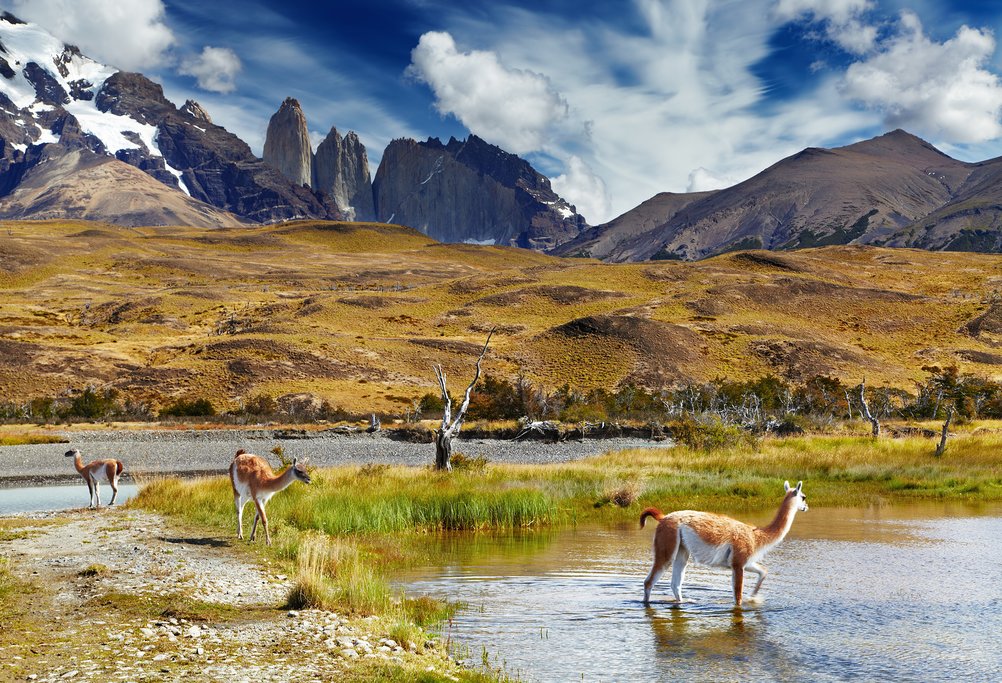
Autumn in southern Argentina and Chile is a visually stunning period, highly cherished by photographers. The changing colors of Patagonia’s landscapes create breathtaking scenes, turning forests into tapestries of gold, red, and orange. For the best weather, it’s advisable to travel earlier in the season, when temperatures generally hover in the upper 40s and 50s Fahrenheit. As late April approaches May, the temperatures begin to drop, and the chances of experiencing freezing rain and snow increase, adding an element of unpredictability to your journey.
Planning a trip to Patagonia during the fall months presents several distinct advantages. The cooler weather, particularly in the early part of the season, is conducive to hiking in areas like Tierra del Fuego and Torres del Paine. Both locations can be uncomfortably chilly during the winter months. Hotels begin to lower their high-season rates, making it a more budget-friendly time to visit. The majority of parks and activity providers remain open for business, offering a wide range of experiences. You’ll also encounter fewer people on the trails, leading to improved chances of spotting elusive wildlife like guanacos and pumas, which tend to be more active when there are fewer disturbances. The absence of large tourist crowds is especially noticeable in popular destinations like El Chaltén and El Calafate, which can become quite congested during the peak summer season.
However, be aware that fall is the only season when visiting Argentina’s Atlantic coast might not be the most appealing option. While the weather may still be pleasant, you’ll miss the whale-watching season, which typically runs from winter through the early summer months. If seeing whales is a priority, consider visiting Patagonia during another time of year.
**Bottom line:** The beautiful scenery is ideal for photography. Enjoy reduced crowds. It is a relatively affordable time to visit.
June to August (Winter): Peace, Quiet, and Snow – A Winter Wonderland
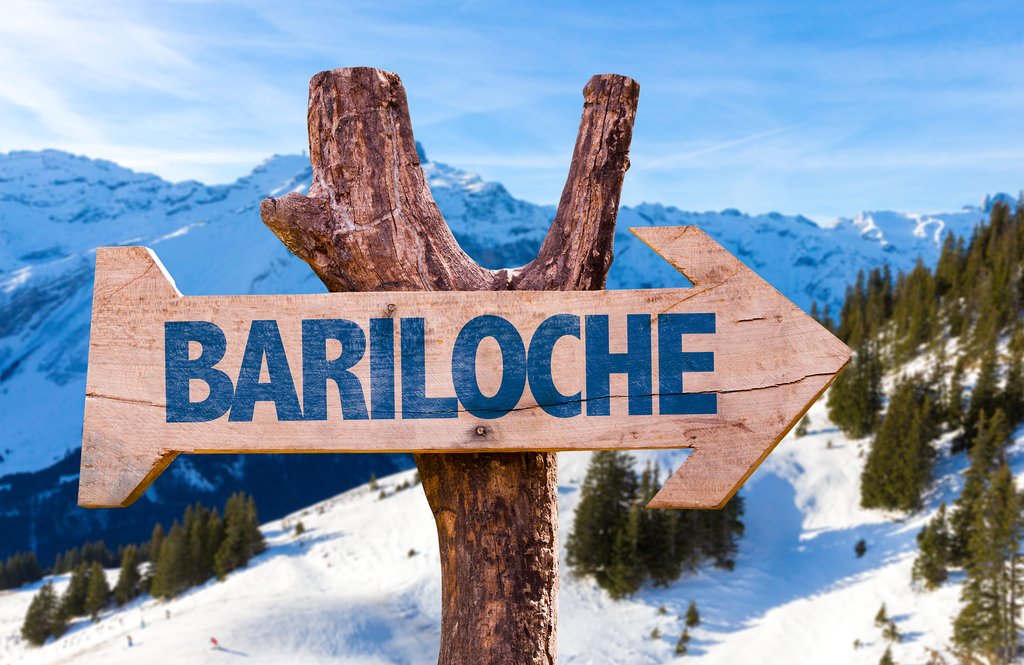
Imagine Patagonia blanketed in a pristine layer of snow. For adventurous souls seeking a unique and challenging experience, Patagonia in winter can be truly spectacular. However, careful planning and preparation are essential. It’s advisable to avoid the southernmost destinations, where the weather can be extremely harsh, and many hotels and services close down for the season. Instead, focus your attention on the lakes regions situated on either side of the Argentina-Chile border.
Temperatures tend to be milder closer to the coast, but in other parts of Patagonia, expect temperatures to hover in the 20s, 30s, and 40s Fahrenheit. Be prepared for intermittent snowstorms and icy roads, which can impact travel plans. Winter weather often causes disruptions, with snow closing mountain passes and leading to delays in flights and bus departures. It’s crucial to maintain a flexible schedule to accommodate potential changes and delays.
Nestled amidst frozen lakes and snow-capped peaks, Bariloche is a charming destination in winter. You’ll find easy access to several nearby ski areas, making it a haven for winter sports enthusiasts. Alternatively, visit Península Valdés, where southern right whales can be observed playing in the waters just off the coast of Puerto Pirámides. Here, it’s easy to join a whale- or penguin-spotting tour. For those seeking an extra dose of adventure, consider visiting Puerto Williams – the southernmost city in the world – in July, when it hosts the Fiesta de la Nieve (Snow Festival). Punta Arenas, located on the Chilean side, also celebrates a Winter Carnival complete with dazzling fireworks and vibrant parades.
**Bottom line:** It’s a good time to visit if you’re interested in whale-watching or skiing. Be flexible, as winter weather affects travel.
September and October (Spring): Discounted Prices and Wildlife Watching – A Season of Rebirth
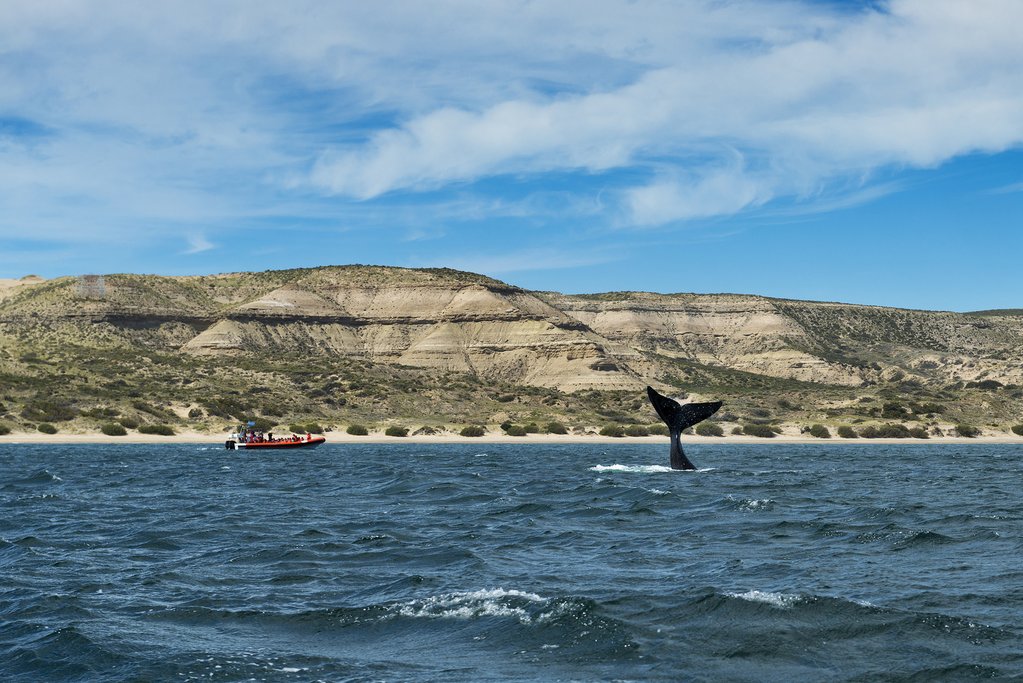
Spring in Patagonia shares similarities with autumn but offers its unique charm. Instead of the vibrant fall foliage, you’ll witness the emergence of spring flowers, bringing a burst of color to the landscapes. Expect warm days, with highs reaching the 60s Fahrenheit, and chilly nights, with lows in the 30s. This season offers a balance of pleasant weather, lower prices, relatively small crowds, and attractive deals on hotel rooms. However, the weather can still be unpredictable, so it’s essential to pack warm clothing and waterproof gear to be prepared for any conditions.
Spring is an excellent season for wildlife viewing. Whale-watching season is in full swing on Argentina’s Atlantic coast, providing ample opportunities to observe these magnificent creatures. While hiking in the national parks, you’ll likely encounter foxes, armadillos, and guanacos, all becoming more active after the winter months. However, keep in mind that as spring transitions into summer, the number of tourists will gradually increase. This means you’ll encounter more people on the trails, potentially impacting wildlife sightings. Making reservations ahead of time is particularly advisable in October to ensure you secure your desired accommodations and tours.
**Bottom line:** Perfect for whale-watching. Bring layers, as weather fluctuates.
When’s the best time to visit Patagonia? A Final Word
Ultimately, the best time to visit Patagonia depends entirely on your personal preferences and priorities. If your heart is set on conquering the iconic “W” trek in Torres del Paine, then summer is undoubtedly the ideal time to go. If you’re a photography enthusiast seeking stunning landscapes and vibrant colors, or if you’re traveling on a budget, then autumn is an excellent choice. Skiers and those seeking off-the-beaten-path adventures will find winter to be a rewarding experience. And if witnessing whales up close is a top priority, then spring is the season to choose.
The beauty of Patagonia lies in its versatility and ability to offer unique and unforgettable experiences throughout the year. Carefully consider your interests and preferences, and plan your trip accordingly to create memories that will last a lifetime.

